In the digital age, where websites and online platforms must navigate between accessibility and security, CAPTCHA systems play a pivotal role in keeping bots and malicious actors at bay. One such system that has gained popularity is SplashUI CAPTCHA. Often integrated into web pages to distinguish human users from automated scripts, CAPTCHA helps protect online services from abuse. A particular variation of this, involving the query parameter ‘ap=1,’ has piqued the curiosity of developers and users alike. In this article, we’ll explore what SplashUI CAPTCHA is, what the ‘ap=1’ parameter means, and how they function together to provide enhanced security measures on the web.

What is SplashUI CAPTCHA?
Before diving into the details of the ‘ap=1’ parameter, it’s important to first understand what SplashUI CAPTCHA is. CAPTCHA stands for Completely Automated Public Turing Test to Tell Computers and Humans Apart. Essentially, it is a challenge-response test used to determine whether a user is a human or a bot.
SplashUI CAPTCHA is a specific implementation of CAPTCHA that focuses on offering a seamless and responsive user experience. Unlike some other forms of CAPTCHA that may be overly intrusive or difficult to solve, SplashUI typically incorporates a more user-friendly interface while still ensuring the website’s security. This can involve simple image selection tasks, checkbox verifications, or other intuitive tasks designed to be solvable by humans but nearly impossible for bots to complete without sophisticated AI programming.
The Role of CAPTCHAs in Web Security
The growing prevalence of bots on the web has made CAPTCHAs indispensable in the field of cybersecurity. Bots can be used for various malicious activities such as spamming, brute-force attacks, scraping sensitive data, and carrying out distributed denial-of-service (DDoS) attacks. As web technologies have advanced, so too have the methods used by malicious bots to bypass basic security measures. This arms race has driven the evolution of CAPTCHA technologies, including innovations like SplashUI CAPTCHA, which balance usability with security.
CAPTCHAs, like those used in SplashUI, block unwanted bots by presenting a challenge that can be easily understood and completed by humans but is extremely difficult for automated programs to solve. This helps to safeguard websites from spam, fake registrations, and various other forms of abuse.
What is the ‘ap=1’ Parameter?
When exploring the technical details behind a CAPTCHA like SplashUI, you may come across the ‘ap=1’ query parameter. In web development, query parameters are additional information included in URLs that help define specific aspects of a page’s functionality or behaviour. In the context of SplashUI CAPTCHA, the ‘ap=1’ parameter seems to play a role in the configuration or customization of how the CAPTCHA is displayed or functions.
While there is limited public documentation specifically addressing the ‘ap=1’ parameter within SplashUI, we can infer its potential function based on general web development principles. The ‘ap’ in ‘ap=1’ may stand for “auto-processing,” “additional protection,” or “advanced preferences.” When set to ‘1,’ this could enable a specific mode of the CAPTCHA—potentially a stricter security setting or an alternate configuration designed for environments with higher bot activity. Alternatively, it could relate to how the CAPTCHA loads on a page, perhaps enabling a more aggressive or passive challenge mode depending on the site’s needs.
How SplashUI CAPTCHA Works with ‘ap=1’
When integrating SplashUI CAPTCHA into a website, developers often have control over how the CAPTCHA operates. This flexibility ensures that the CAPTCHA can be tailored to the specific requirements of the website. By including parameters like ‘ap=1’ in the CAPTCHA’s configuration, webmasters may be able to adjust the sensitivity, appearance, or behaviour of the CAPTCHA.
For instance, websites with high traffic volumes or a history of bot attacks may opt to enable stricter CAPTCHA modes. In this case, the ‘ap=1’ parameter could signal that the CAPTCHA should be more aggressive in its bot-detection algorithms. On the other hand, less stringent security requirements may omit the parameter or set it to a different value, allowing for smoother user experiences while still maintaining basic protection.
SplashUI CAPTCHA may also offer features like timed challenges or adaptive CAPTCHAs that increase in difficulty based on detected suspicious activity. With ‘ap=1’ potentially being a toggle for such features, it provides developers with the flexibility to fine-tune the CAPTCHA for their specific use case.
Benefits of Using SplashUI CAPTCHA with ‘ap=1’
There are several key advantages to using SplashUI CAPTCHA with the ‘ap=1’ parameter enabled, especially for websites looking to balance security with user experience. These benefits include:
- Enhanced Bot Detection
By possibly enabling advanced bot-detection algorithms, the ‘ap=1’ parameter could help filter out more sophisticated bots that might otherwise pass through a standard CAPTCHA system. This is particularly important for websites that are frequent targets of bot-driven attacks or spam.
- Increased Security for Sensitive Transactions
For e-commerce platforms, banking websites, and other services that handle sensitive information, the additional security provided by a more stringent CAPTCHA can help prevent fraudulent activity. By integrating the ‘ap=1’ setting, these websites may bolster their defences against credential stuffing, account takeovers, and other forms of cybercrime.
- Customizable User Experience
The flexibility of SplashUI CAPTCHA allows webmasters to tweak settings like difficulty, timing, and challenge type to better suit their audience. For example, a site targeting less tech-savvy users might opt for simpler challenges, whereas a high-security portal could enable more difficult ones using the ‘ap=1’ parameter.
- Reduced Impact on Legitimate Users
While the CAPTCHA’s main goal is to block bots, it’s equally important that the system doesn’t frustrate or alienate legitimate users. SplashUI CAPTCHA, especially with configurable parameters like ‘ap=1,’ strives to maintain ease of use while delivering strong security. When configured correctly, users may not even notice that they’re interacting with a CAPTCHA, making it a subtle yet effective barrier against bots.
Potential Challenges and Solutions
Despite the advantages, there are always potential downsides to CAPTCHA systems, including SplashUI CAPTCHA with the ‘ap=1’ parameter enabled. These challenges include:
- Accessibility Issues
Some CAPTCHA systems, especially those that involve visual puzzles or audio challenges, can pose difficulties for users with disabilities. Developers must ensure that their CAPTCHA implementation adheres to accessibility standards, providing alternative solutions for those who may struggle to solve traditional CAPTCHA challenges.
- User Frustration
Even the most well-designed CAPTCHA can frustrate users, particularly if the challenges are too difficult or appear too frequently. While the ‘ap=1’ parameter may enhance security, webmasters should be careful not to overuse it in a way that drives away legitimate users. Proper testing and optimization can help mitigate this issue.
- Bypassing by Sophisticated Bots
Though CAPTCHA systems are designed to block bots, some advanced bots powered by machine learning can occasionally bypass them. Continuous updates and adaptations of the SplashUI CAPTCHA system, particularly with features like ‘ap=1,’ are necessary to stay ahead of these increasingly sophisticated threats.
Conclusion
SplashUI CAPTCHA, especially when paired with the ‘ap=1’ parameter, offers a robust and flexible solution for webmasters looking to protect their websites from malicious bot activity while maintaining a user-friendly experience. By providing enhanced bot detection, customizable security settings, and a streamlined interface, this CAPTCHA system strikes a balance between usability and protection. However, as with any security measure, proper implementation and ongoing adjustments are key to maximizing its effectiveness.
Understanding how the ‘ap=1’ parameter works within the SplashUI CAPTCHA framework can help developers fine-tune their CAPTCHA settings, ensuring optimal performance and user satisfaction. As web security threats continue to evolve, innovations like SplashUI CAPTCHA will remain critical in defending against malicious actors while keeping the web a safe and accessible place for legitimate users.
You may also read
valentine rocky adlon
24.5″ aoc g2590px/g2



